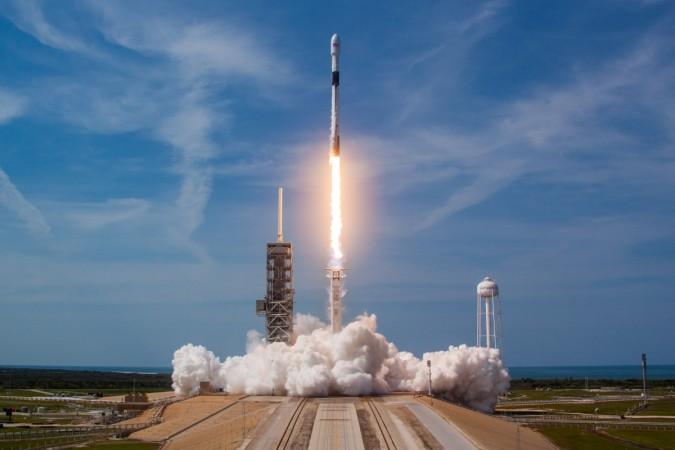
SpaceX successfully debuted the final form of their Falcon 9 workhorse, delivering Bangladesh's first communications satellite to a geostationary transfer orbit (GTO). They even managed to successfully land the Falcon on Of Course I Still Love You, the SpaceX drone ship stationed off the Florida coast.
SpaceX's live stream showcased the entire event, right from the take off to when the first stage booster made a dramatic and clean landing. The drone ship was anchored about 630 km from the Florida coast, in the Atlantic Ocean.
Just two and a half minutes into the launch, the rocket's upper stage was separated and pressurized nitrogen gas was used to flip the spacecraft around so that it flies tail first back to Earth. Four small winglets stabilized the rapid descent, directing the booster toward its landing pad. And just as the rocket reached the drone ship, four legs unfolded for a steady and flawless landing.
A few seconds before landing, the video feed got interrupted, so the actual landing was not visible live. But it was confirmed that the booster, which is about as big as a 15 story building, landed perfectly on target.
Though the launch from NASA's Kennedy Space Center on the previous day was aborted at the very last minute, quite literally, the next attempt went without any glitches. The drone ship will bring the booster back to SpaceX's facilities where it will be analyzed and readied for the next launch.

This was SpaceX's successful landing number 25, with 14 of them happening out at sea.
Block 5 Falcon 9 can now be launched at least 9 more times before needing any serious refurbishment, says SpaceX. Earlier versions of the Falcon 9 - Block 3 and Block 4 - have only been flown twice till date. They were not designed to be used more than two times. The Block 5 of Falcon 9 will be the last version of the rocket and is likely to be used with the Falcon Heavy as well.
Falcon 9 Block 5 first stage has landed on the Of Course I Still Love You droneship. pic.twitter.com/YHqdxIrc8b
— SpaceX (@SpaceX) May 11, 2018
As for what's next at SpaceX, Elon Musk announced the next-gen reusable launch vehicle BFR, at the International Astronautical Congress in September 2017. Musk stated that once the production of the BFR goes into full swing, more efforts and resources will be directed toward the project. First testing of the prototype is expected to begin in early 2019.
Musk fully intends to cannibalize the Falcon and Dragon projects and move the technology towards the building of BFR. So the Merlin engines are also unlikely to be further developed, making way for the Raptor engines planned for the BFR.

















